Discover Mumbai Like a Local: 25+ Best Things to Do, Hidden Gems & Insider Tips
Picture this: You’re standing at the edge of the Arabian Sea, salty breeze in your hair, watching the sun paint the sky in shades of orange and pink. Behind you, the city hums with energy—honking taxis, vendors calling out, the aroma of spicy street food floating through the air. This is Mumbai, where every corner tells a story and every street offers an adventure.
What is very famous in Mumbai? That’s the million-dollar question travelers ask before visiting India’s financial capital. Sure, you’ve heard about the Gateway of India and Marine Drive. But Mumbai is so much more than its postcard pictures. It’s a city where centuries-old temples stand beside gleaming skyscrapers, where millionaires and street vendors share the same sidewalks, and where you can eat a meal fit for royalty for less than the price of a coffee back home.
This guide isn’t your typical tourist checklist. We’re diving deep into the real Mumbai—the hidden lanes, the secret viewpoints, the local hangouts where Mumbaikars actually spend their time. Whether you’re traveling on a shoestring budget or ready to splurge, whether you have 24 hours or a full week, this guide has got you covered.
Best time to visit? October through February brings pleasant weather perfect for exploring. The monsoon months (June-September) transform the city into a green paradise, though you’ll need an umbrella. Summer (March-May) can be hot and humid, but that’s when you’ll find the best deals and fewer crowds.
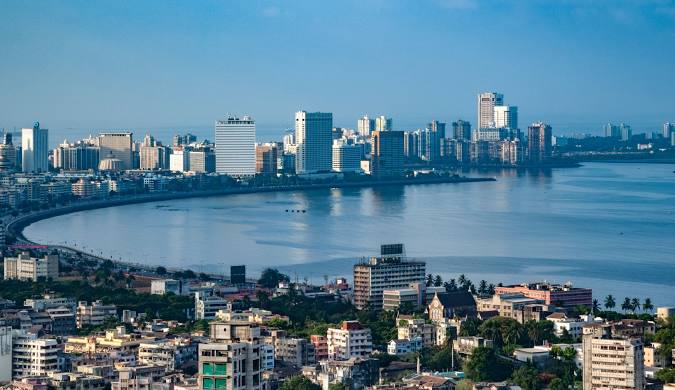
Quick Reference Guide
| Category | Top Picks | Best Time to Visit | Budget Range |
| Heritage Sites | Gateway of India, CST, Elephanta Caves | Early morning (7-9 AM) | ₹20-₹600 |
| Food Experiences | Juhu Beach, Mohammad Ali Road | Evening (6-10 PM) | ₹50-₹2,000 |
| Shopping | Colaba Causeway, Linking Road | Afternoon (2-8 PM) | ₹100-₹5,000 |
| Nature Escapes | Sanjay Gandhi National Park, Marine Drive | Morning/Sunset | Free-₹200 |
| Nightlife | Bandra, Lower Parel | 8 PM onwards | ₹500-₹3,000 |
| Cultural Activities | Kala Ghoda, NCPA | Varies by event | ₹100-₹2,500 |
🏛️ Section 1: Historic & Heritage Must-Sees
Gateway of India: Your Mumbai Story Begins Here
The Gateway of India is more than just Mumbai’s most photographed monument—it’s where the city’s soul meets the sea. Built in 1924 to commemorate King George V’s visit, this majestic arch stands as a reminder of India’s colonial past and independent future.
Insider tip: Skip the midday crowds and arrive at sunrise (around 6 AM). You’ll have the place almost to yourself, and the golden morning light makes for stunning photos. Watch the ferry boats bob in the harbor while local joggers pass by and street photographers set up their tripods.
From here, catch a ferry to Elephanta Caves or simply grab a cutting chai (small tea) from a nearby vendor and soak in the atmosphere. The area around the Gateway is perfect for people-watching—you’ll see everyone from honeymooning couples to school groups to tourists feeding pigeons.
Pro tip: The Taj Mahal Palace Hotel right next to the Gateway offers an incredible high tea experience if you’re looking to splurge. Even if you don’t stay here, walk through the lobby to admire its legendary architecture. Check out the official Maharashtra Tourism website for more details on Mumbai attractions.
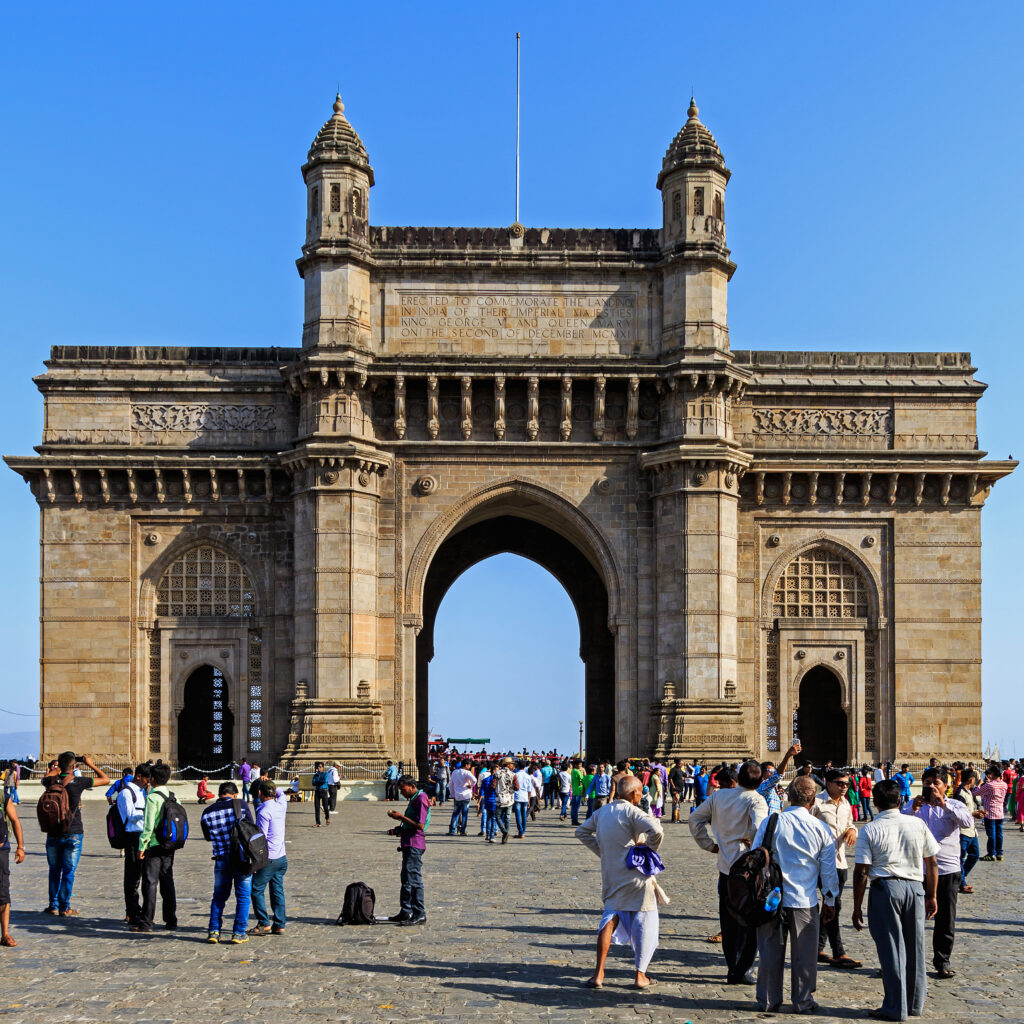
Chhatrapati Shivaji Maharaj Terminus (CSMT): A Train Station That’s a Masterpiece
Most people rush through train stations. At CST, you’ll want to slow down. This UNESCO World Heritage Site is a mind-blowing fusion of Victorian Gothic Revival and traditional Indian architecture. The intricate stone carvings, stained glass windows, and turrets make it look more like a palace than a train station.
Local scoop: Head to Platform 18 during late morning (10-11 AM) when the light streams through the stained glass, creating rainbow patterns on the floor. The platform is less crowded at this time, giving you space to appreciate the architectural details without getting swept up in the commuter rush.
Over 3 million passengers pass through CST daily, making it one of the busiest railway stations in India. The building itself took 10 years to complete and features sculptures, gargoyles, and even a peacock motif—India’s national bird—carved into the stonework.
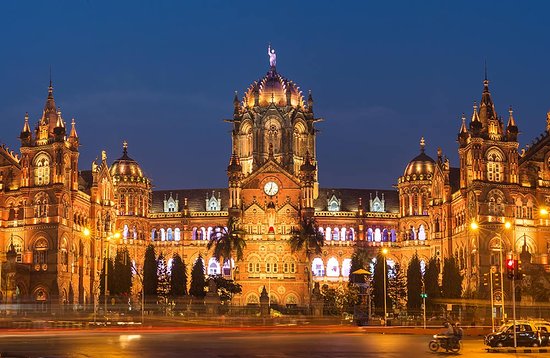
Elephanta Caves: Ancient Wonders on an Island
A short ferry ride from the Gateway of India takes you to Elephanta Island, home to rock-cut cave temples dating back to the 5th century. The main cave houses a stunning 20-foot tall sculpture of Trimurti—the three-faced Shiva that represents creation, preservation, and destruction.
Practical tips:
- Ferries run from 9 AM to 2 PM (last return at 5:30 PM)
- The ride takes about an hour each way
- Budget ₹150-₹200 for ferry tickets
- Entry fee: ₹40 (Indians), ₹600 (foreigners)
- There are 120 steps to climb from the jetty to the caves
DIY or guided tour? If you love history, hiring a local guide (around ₹500) brings the ancient sculptures to life with stories and legends. If you prefer exploring at your own pace, download an audio guide app before you go (WiFi on the island is spotty).
Don’t miss the smaller caves on the island—most tourists skip them, but they offer peaceful spots for meditation and photography. Learn more about visiting Elephanta Caves.
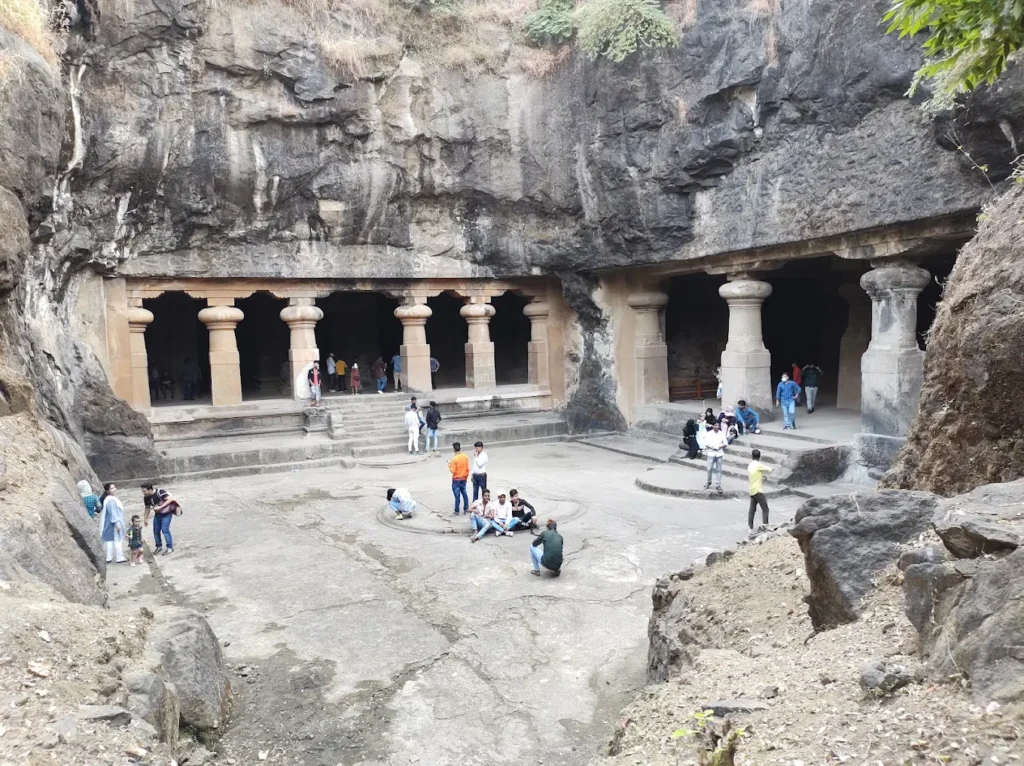
Hidden Heritage Spots: Off the Tourist Trail
Bassein Fort (Vasai): About an hour north of Mumbai lies this sprawling Portuguese fort from the 16th century. Covered in creeping vines and echoing with history, it’s a photographer’s dream. Perfect for a half-day trip if you want to escape the city chaos.
Banganga Tank: Tucked away in Malabar Hill, this ancient water tank is believed to be over 1,000 years old. Surrounded by temples and heritage buildings, it feels like stepping back in time. Visit during the Banganga Festival (January) for classical music performances against this stunning backdrop.
Old Fort Walls: Near CST, you can still find remnants of Bombay Fort, the British fortification that gave the Fort area its name. Walk along Horniman Circle Gardens to spot sections of the original walls peeking through modern buildings.
🎨 Section 2: Culture, Arts & Local Stories
Mani Bhavan: Where Gandhi Lived and Dreamed
Mani Bhavan isn’t just another museum—it’s where Mahatma Gandhi lived for 17 years and launched some of India’s most important independence movements. The preserved rooms show his simple lifestyle, and the museum houses rare photographs, letters, and personal belongings.
What makes it special: Free audio guides available in multiple languages help you understand the significance of each room. The library on the ground floor has an impressive collection of books about Gandhi and the independence movement. Sometimes, special lectures and documentary screenings happen here—check their schedule when you visit.
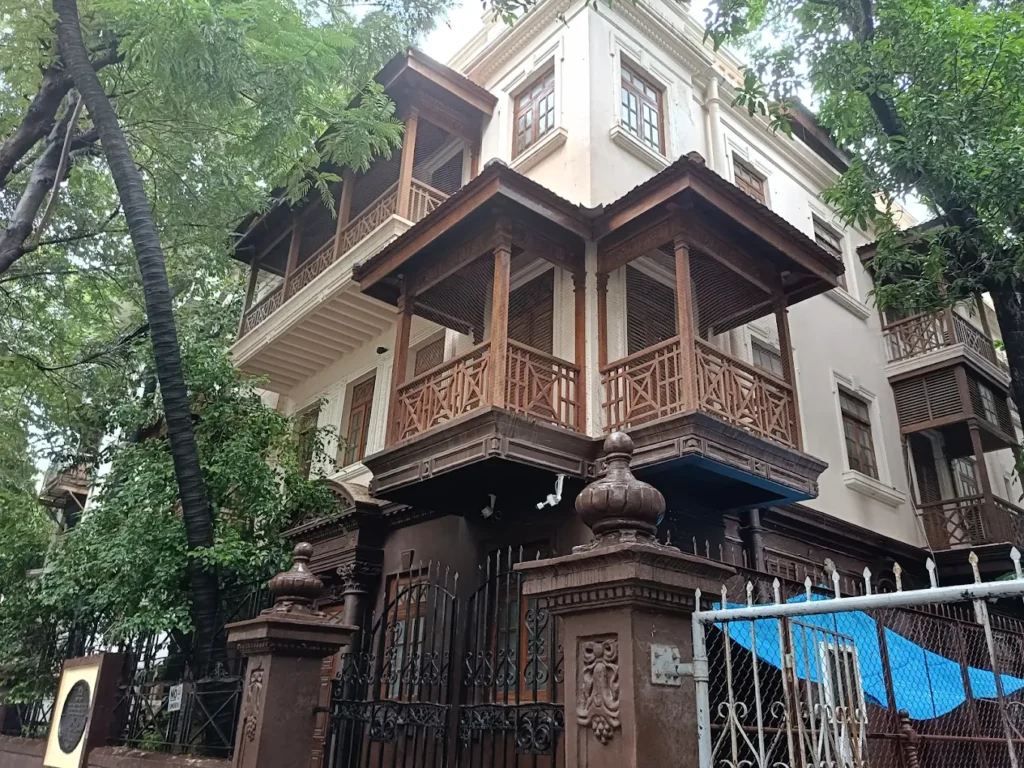
Location: Laburnum Road, Gamdevi
Timings: 9:30 AM – 6 PM (closed Mondays)
Entry: Free (donations welcome)
Kala Ghoda Art Precinct: Mumbai’s Creative Heart
The Kala Ghoda neighborhood is where art, history, and culture collide. Named after the black horse statue that once stood here (now relocated), this area is packed with art galleries, museums, cafes, and heritage buildings.
Your art walk itinerary:
- Start at Jehangir Art Gallery (10 AM): Free entry, rotating exhibitions from established and emerging artists
- Cross to National Gallery of Modern Art (11 AM): Impressive collection of Indian modern art
- Lunch break at Kala Ghoda Cafe (1 PM): Charming courtyard setting
- Explore street art (2 PM): Alleyways around Rampart Row feature stunning murals
- Evening chai at Rhythm House (4 PM): Iconic music store with a nostalgic vibe
Kala Ghoda Arts Festival (February): For nine days each February, the streets transform into an open-air art gallery with installations, performances, workshops, and food stalls. It’s absolutely worth planning your trip around if you love arts and culture. Visit the official Kala Ghoda Association website for festival dates.
National Centre for the Performing Arts (NCPA): World-Class Performances
The NCPA is India’s premier multi-venue cultural center, hosting everything from classical Indian dance to Western opera, jazz concerts to experimental theater.
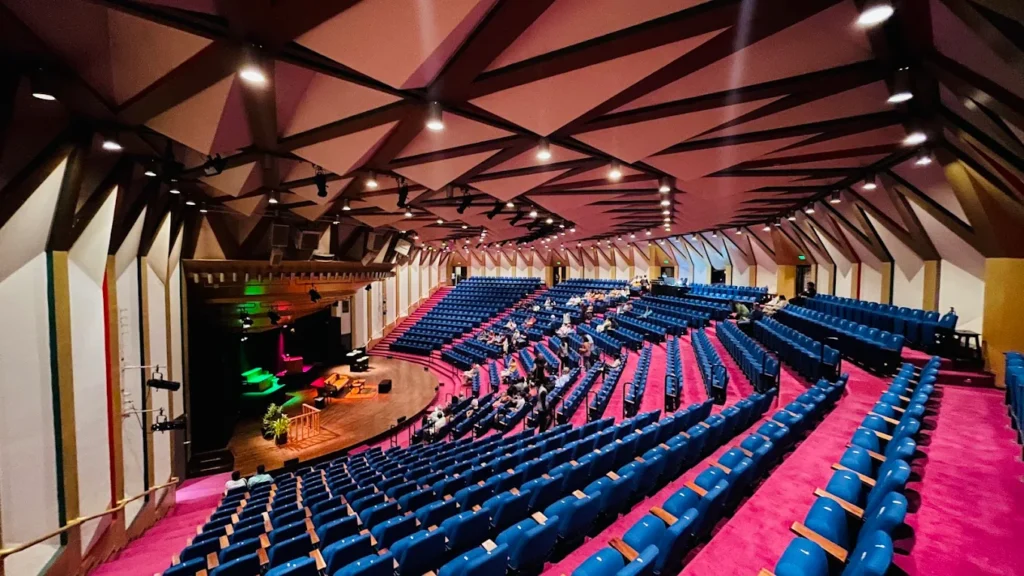
Pro tips:
- Check the schedule at ncpamumbai.com well in advance
- Tickets range from ₹300 to ₹2,500 depending on the show
- Dress code is smart casual for most performances
- The venue itself is beautiful, located right by the sea with stunning views
Special events: The NCPA hosts special festivals throughout the year—the International Jazz Festival and Theatre Festival are particularly popular among locals and visitors alike.
Local Workshops: Take Home Skills, Not Just Souvenirs
Want something more memorable than a keychain? Try these hands-on experiences:
Block Printing Workshop (Dharavi): Learn the traditional art of hand-block printing on fabric. Several community organizations offer 2-3 hour workshops (₹1,500-₹2,500) where you create your own scarf or bag.
Bollywood Dance Class (Bandra): Multiple studios offer drop-in classes where you can learn the signature moves from famous movie songs. It’s hilarious, energetic, and surprisingly good exercise (₹500-₹1,000 per class).
Pottery Session (Khar): Get your hands dirty at one of Mumbai’s pottery studios. Create your own bowl, cup, or decorative piece and have it fired and shipped to you (₹1,500-₹3,000).
🌳 Section 3: Nature & Quiet Escapes
Marine Drive: The Queen’s Necklace
Marine Drive is Mumbai’s most famous promenade—a 3.6-kilometer arc along the Arabian Sea that lights up at night, earning it the nickname “Queen’s Necklace.” But there’s more to it than just pretty lights.
Best experiences:
Sunrise walk (6-7 AM): Join the locals for morning exercise, watch fisherfolk bring in their catch, and enjoy the city before it fully wakes up.
Sunset spectacle (6-7 PM): This is what Marine Drive is famous for. The sky transforms into a canvas of colors, and the promenade fills with couples, families, and street food vendors.
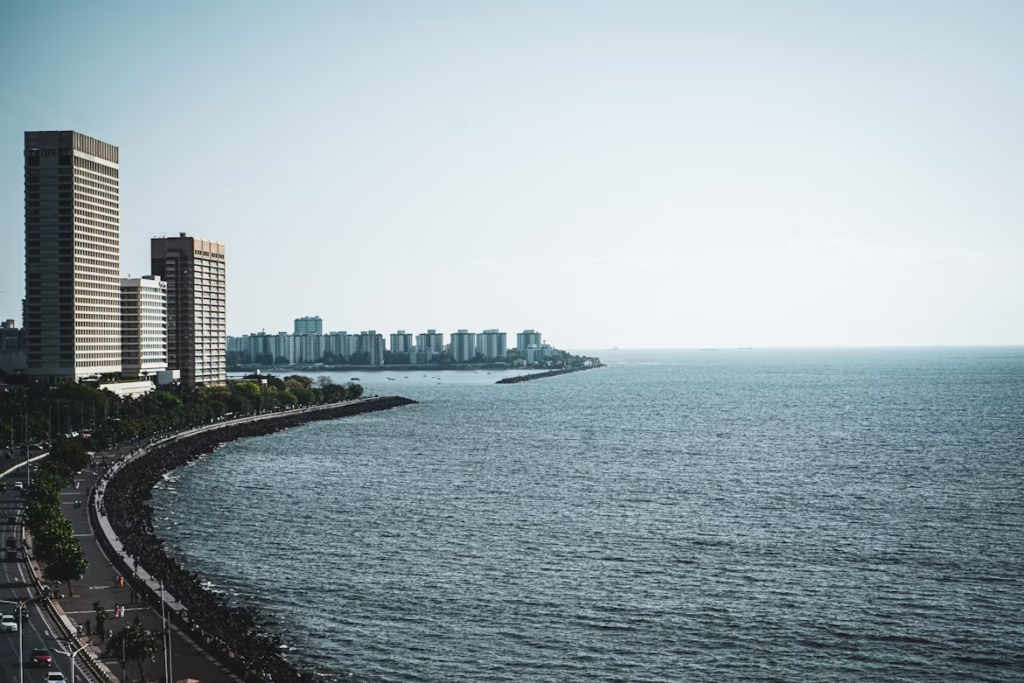
Photography spots:
- Near Chowpatty Beach (south end) for wide-angle shots
- By the Art Deco buildings (mid-stretch) for architectural frames
- At Nariman Point (north end) for skyline views
Food alert: Grab some roasted peanuts (₹20), fresh coconut water (₹40), or bhutta (roasted corn, ₹30) from vendors along the way.
Hanging Gardens & Kamala Nehru Park: City Views Without the Crowds
Perched on Malabar Hill, these connected gardens offer panoramic views of Mumbai without the Marine Drive crowds. The Hanging Gardens feature animal-shaped hedges that kids love, while Kamala Nehru Park has the famous “Boot House” (shaped like a boot from a nursery rhyme).
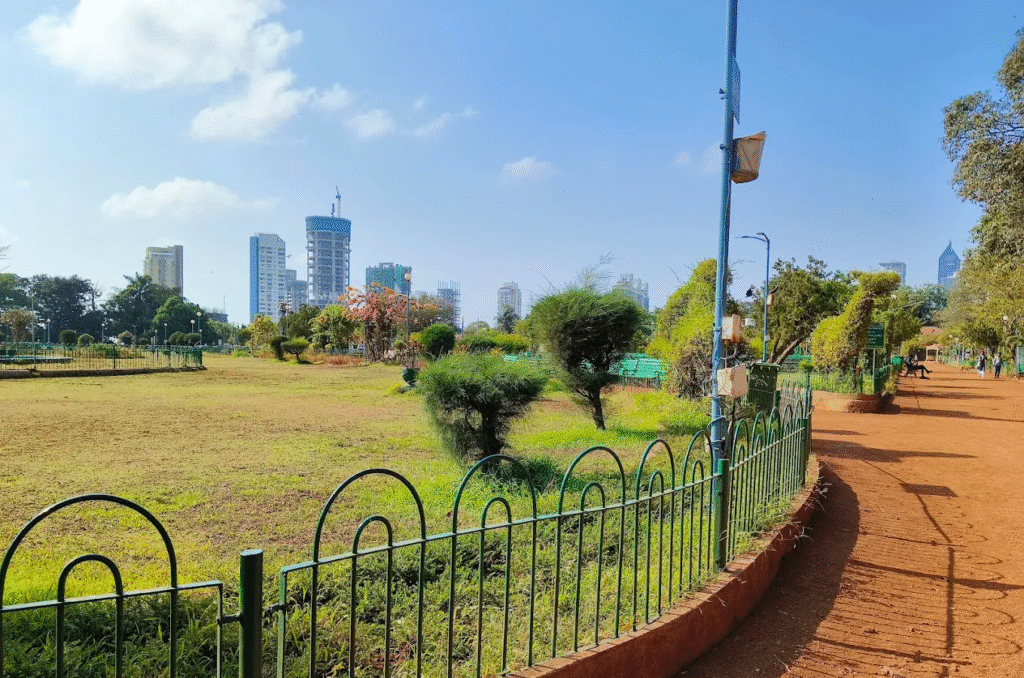
Insider secret: Walk to the far end of the park near sunset for unobstructed views of the Arabian Sea and Marine Drive below. There’s a small seating area where locals hang out—it’s peaceful and perfect for a moment of calm.
Timings: 5 AM – 9 PM
Entry: Free
Sanjay Gandhi National Park & Kanheri Caves: Wild Escapes in the City
Hard to believe, but Mumbai has a 104-square-kilometer national park within its city limits! Sanjay Gandhi National Park is home to leopards (rarely seen), deer, monkeys, and over 1,000 plant species.
What to do here:
Kanheri Caves: These 109 Buddhist caves carved into rock date back to the 1st century BCE. The main cave features a beautiful stupa and intricate carvings. Budget 2-3 hours for exploration.
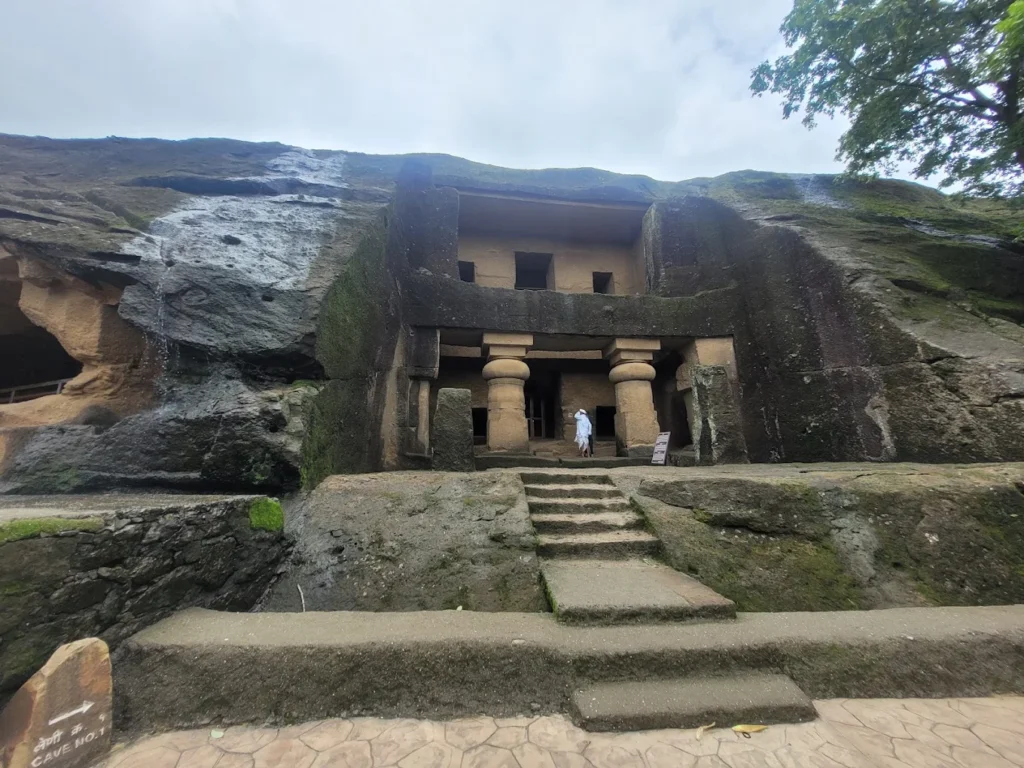
Nature trails: Multiple trails ranging from easy to moderate difficulty. The Shilonda Trail is popular for its scenic views.
Boating at Vihar Lake: Peaceful paddle boating available on weekends.
Lion & Tiger Safari: For families with kids, though it’s quite commercialized.
Essential information:
- Timings: 7:30 AM – 5:30 PM (closed Mondays)
- Entry: ₹54 per person + ₹43 for Kanheri Caves
- Location: Borivali East (northern suburbs)
- Safety tips: Stick to marked trails, don’t venture out after dark, carry water and snacks
Check the official website for current timings and COVID-related guidelines.
Hidden Green Spots: Nature’s Secret Hideouts
Aarey Milk Colony: Mumbai’s “green lungs” with tribal villages, farms, and quiet walking paths. Under threat from development, so visit while it’s still accessible. Great for cycling and bird watching.
Powai Lake Walking Path: A 7-kilometer trail around the lake offering views of the IIT Bombay campus and the city skyline. Best visited early morning or evening.
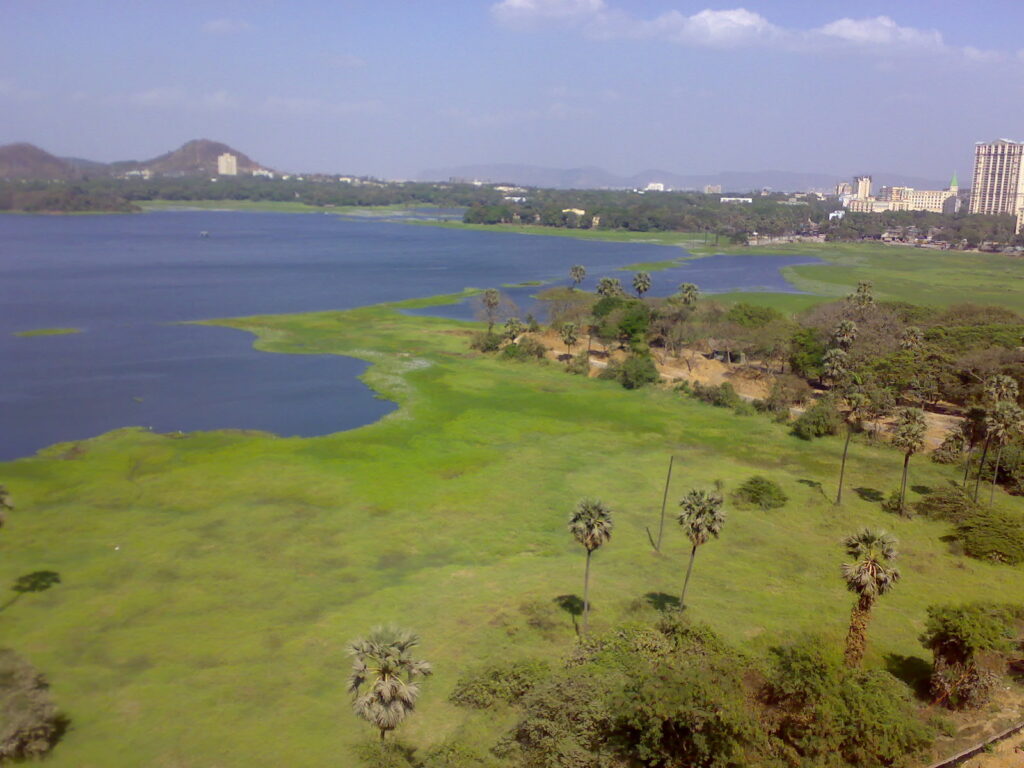
Hornby Lighthouse: This lesser-known lighthouse near the Mumbai Port Trust offers unique angles of the harbor. Not always open to public, but worth checking if you’re in the area.
🍲 Section 4: Food & Flavors: From Street to Fine Dining
Juhu Beach Street Food: A Delicious Adventure
Juhu Beach transforms into Mumbai’s ultimate food carnival every evening. The stretch from the beach entrance to the main road is lined with vendors serving the city’s most iconic street food.
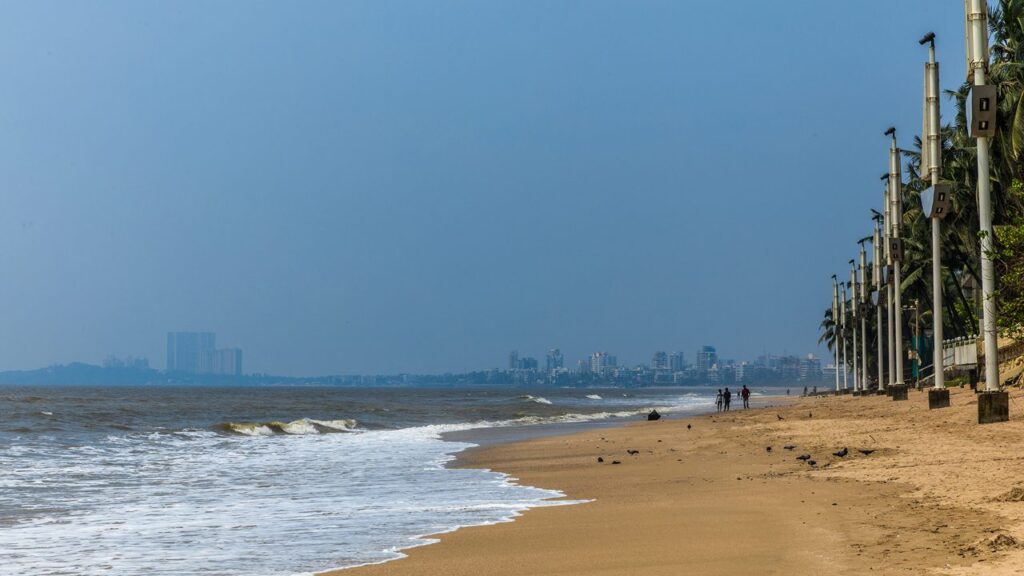
Your Juhu food crawl map:
- Pav Bhaji (₹80-₹150): Start at Jai Malhar stall—their buttery, spicy vegetable curry with soft bread rolls is legendary
- Vada Pav (₹20-₹40): Mumbai’s “burger”—spicy potato fritter in a bun. Try Ashok Vada Pav near the beach entrance
- Pani Puri (₹30-₹50): Crispy shells filled with spicy water. Elco Market (just behind the beach) has the best
- Sev Puri (₹40-₹60): Crunchy snack topped with potatoes, onions, chutneys, and sev
- Kulfi (₹40-₹80): End with traditional Indian ice cream from Badshah near Bandra Station
Best time: 6 PM – 10 PM when the beach is lively and all stalls are operational.
Safety tip: Look for busy stalls with high turnover—it means fresh food. Always carry hand sanitizer.
South Mumbai Fine Dining: When You Want to Splurge
Mumbai’s food scene rivals any global city. Here are restaurants worth the splurge:
Masque (Lower Parel): India’s answer to farm-to-table fine dining with creative seasonal menus (₹4,000+ per person). Book in advance.
The Table (Colaba): Contemporary global cuisine in a chic setting (₹2,500-₹3,500 per person).
Ekaa (Mahalaxmi): Modern Indian cuisine that reinvents traditional dishes (₹3,500+ per person).
Bombay Canteen (Lower Parel): Regional Indian dishes with modern twists, more casual but equally delicious (₹1,500-₹2,000 per person).
Neighborhood Food Trails: Eat Like a Local
Dharavi Street Food: Yes, Asia’s largest slum has incredible food! Join a guided walking tour that includes safe, delicious street food experiences while supporting local communities.
Bandra Cafes: Hill Road and Pali Hill are packed with trendy cafes:
- Candies for Goan specialties
- Theobroma for desserts
- Elma’s Bakery for breakfast
Fort Area Heritage Food Walk: Mohammad Ali Road during Ramadan (timing varies yearly) is a food lover’s paradise with special street food stalls. The Bohri Mohalla area offers authentic Bohri Muslim cuisine year-round.
Iraani Cafes: These old-world cafes serve bun maska (butter bun) and chai. Try:
- Kyani & Co (Dhobi Talao)
- Britannia & Co (Ballard Estate)—their berry pulav is legendary
Mumbai’s Specialties: Don’t Leave Without Trying
Sweet Shops:
- Mysore Cafe (Matunga): Best South Indian filter coffee and idlis
- Shree Krishna Sweets (Ville Parle): Authentic sweets
- K Rustom (Churchgate): Ice cream sandwiches since 1953
Chai Corners:
- Chai Bar (Bandra): Over 50 varieties of tea
- Arun Fast Food (Near Churchgate): Parsi-style chai
Fusion Cafes:
- Bombay Bronx (Andheri): Mexican-Indian fusion
- The Pantry (Kala Ghoda): Healthy, Instagram-worthy meals
🛍️ Section 5: Shopping & Local Markets
Colaba Causeway: Bargain Hunter’s Paradise
Colaba Causeway is where shopping becomes sport. This bustling street market stretches from the Gateway of India to Colaba Post Office, packed with stalls selling everything imaginable.
Must-buy items:
- Bohemian jewelry (₹100-₹500)
- Cotton clothing (₹200-₹800)
- Handicrafts and home decor (₹150-₹2,000)
- Leather goods (₹300-₹1,500)
- Spices and tea (₹100-₹500)
Bargaining essentials:
- Start at 40-50% of the quoted price
- Walk away if the price doesn’t drop—they’ll often call you back
- Buy multiple items from one vendor for better deals
- Carry small bills (vendors often “don’t have change”)
- Shop in the evening when vendors are more flexible
Hidden gems: Duck into Colaba Arcade and Afghan Church area for boutique stores with fixed (but reasonable) prices.
Linking Road, Bandra: Fashion at Unbeatable Prices
Linking Road is where Mumbai’s fashionistas hunt for trendy clothes at throwaway prices. The street is lined with stalls and small shops selling everything from imitation designer wear to genuine export surplus.
Shopping strategy:
- Timing: Late afternoon (4-8 PM) is ideal
- Quality check: Always examine stitching, fabric quality, and zippers
- Sizing: Indian sizes run small—try before buying
- Best finds: Western wear, accessories, shoes
Pro tip: The lanes behind Linking Road (Hill Road and Pali Village Road) have boutique stores and authentic brands if you want to escape the chaos.
Less-Touristy Markets: Where Locals Actually Shop
Chor Bazaar (Thieves Market): This antique market in Bhendi Bazaar is treasure trove of vintage finds—old cameras, Bollywood posters, colonial-era furniture, gramophones, and quirky collectibles. Best visited Friday-Sunday mornings. Bargain hard!
Zaveri Bazaar (Jewelry Market): Mumbai’s traditional gold jewelry hub. Even if you’re not buying, the area is fascinating—shops displaying thousands of gold ornaments, diamond merchants, and pearl traders. Located near Kalbadevi.
Mangaldas Market (Textile Market): Wholesale fabric market where you’ll find everything from silk to cotton at wholesale prices. Great if you need custom tailoring done (plenty of tailors nearby).
Crawford Market: Historic market for fresh produce, dry fruits, spices, and imported foods. The building itself is architectural beauty with Norman and Flemish Gothic elements.
Artisan & Designer Stores: Support Local Talent
Good Earth (Multiple locations): High-end Indian home decor and clothing
The Bombay Store (Fort): Curated Indian handicrafts, perfect for gifts
Fab India (Multiple locations): Ethnic wear and home goods with social impact
Phillips Antiques (Colaba): Genuine antiques and art pieces
Cuckoo Club (Bandra): Designer clothing boutique
🌃 Section 6: Nightlife & Entertainment After Dark
Pubs & Live Music: Where Mumbai Parties
Bandra hotspots:
- Toto’s Garage: Legendary pub with live music most nights (₹1,500-₹2,500)
- The Little Door: Speakeasy-style bar with craft cocktails (₹800-₹1,500)
- Monkey Bar: Quirky decor and creative bar food (₹1,200-₹2,000)
Lower Parel scene:
- Antisocial: Gastropub with live bands and DJ nights (₹1,500-₹2,500)
- The Bar Stock Exchange: Prices fluctuate like stock market—fun concept! (₹1,000-₹2,000)
- High Ultra Lounge: Rooftop bar with city views (₹2,000-₹4,000)
Entry requirements: Most places require couples or mixed groups (solo men might face entry issues). Dress code is smart casual—no shorts or flip-flops.
Bollywood Studio Tours: Lights, Camera, Action!
Ever wanted to see how Bollywood magic is made? Film City in Goregaon offers guided tours, though they require booking in advance.
What to expect:
- Walk through actual film sets
- Watch live shoots (if you’re lucky)
- Learn about filmmaking process
- Duration: 3-4 hours
- Cost: ₹2,000-₹5,000 per person
Better alternatives:
- Join Mumbai Film City Tours or Bollywood Tours companies that handle permissions
- Visit during weekdays when shooting is more likely
- Some tours include meeting junior artists or watching dance rehearsals
Budget option: Take the Bollywood Walking Tour in Bandra to see celebrity homes and famous filming locations (₹500-₹1,000).
Evening Activities: Beyond Bars and Clubs
Night Markets:
- Bandra Night Market (seasonal): Food, fashion, and live music
- Colaba Market: Stays open late, perfect for evening strolls
Heritage Walks:
- Mumbai Magic and Khaki Tours offer evening walking tours of Fort area and South Mumbai (₹1,500-₹2,500)
Cultural Shows:
- Prithvi Theatre (Juhu): English and Hindi plays in intimate setting
- NCPA evening performances: Classical music, dance, theater
Sunset Cruises:
- Mumbai Sunset Cruise from Gateway of India offers harbor views and city skyline (₹1,500-₹3,000 per person)
🗺️ Section 7: Thematic Itineraries & Sample Routes
1-Day Mumbai Whirlwind: Maximum City in Minimum Time
Morning (7 AM – 12 PM):
- 7:00 AM: Sunrise at Gateway of India
- 8:00 AM: Walk to Colaba Causeway, grab breakfast at Cafe Mondegar
- 9:30 AM: Explore Chhatrapati Shivaji Terminus (CST)
- 10:30 AM: Quick visit to Mani Bhavan
Afternoon (12 PM – 6 PM):
- 12:30 PM: Lunch at The Bombay Canteen or Britannia & Co
- 2:00 PM: Kala Ghoda art walk
- 4:00 PM: Marine Drive walk starting from Nariman Point
Evening (6 PM – 10 PM):
- 6:30 PM: Watch sunset from Marine Drive
- 7:30 PM: Juhu Beach street food dinner crawl
- 9:00 PM: Drinks at a Bandra pub if you still have energy!
2-Day “Art & Culture” Route: For the Culturally Curious
Day 1: Heritage & History
- Morning: Gateway of India → Ferry to Elephanta Caves
- Afternoon: Mani Bhavan → Hanging Gardens
- Evening: Kala Ghoda gallery hopping → Dinner at Fort area
Day 2: Arts & Performance
- Morning: National Gallery of Modern Art → Jehangir Art Gallery
- Afternoon: Block printing workshop or Bollywood dance class
- Evening: NCPA performance or Prithvi Theatre show
3-Day “Nature & Urban Mix”: Best of Both Worlds
Day 1: South Mumbai Highlights
- Gateway of India, CST, Mani Bhavan, Marine Drive sunset
Day 2: Green Escapes
- Morning: Sanjay Gandhi National Park and Kanheri Caves
- Evening: Powai Lake walk or Aarey Colony exploration
Day 3: Food & Shopping
- Morning: Crawford Market and Fort area heritage walk
- Afternoon: Colaba Causeway shopping
- Evening: Bandra cafe hopping and Linking Road shopping
Travel Styles to Consider
Family-Friendly: Focus on Juhu Beach, Sanjay Gandhi National Park, ISKCON Temple, Essel World amusement park, and kid-friendly museums.
Adventure Seekers: Rock climbing at Sanjay Gandhi National Park, paragliding at nearby beaches, cycling tours through heritage areas, and water sports at nearby coastal spots.
Offbeat Explorers: Dharavi walking tour, Vasai Fort, Khotachiwadi village, Sewri flamingo watching (November-March), and lesser-known temples.
🔧 Section 8: Tips, Logistics & Local Hacks
Getting Around: Navigating Mumbai Like a Pro
Local Trains: The lifeline of Mumbai, carrying 7.5 million passengers daily. Download the m-Indicator app for schedules and routes.
Pro tips:
- Avoid peak hours (8-11 AM, 5-9 PM)
- Women have separate “ladies compartments”
- Keep your belongings secure
- Cost: ₹10-₹50 depending on distance
Taxis & Auto-rickshaws:
- Kaali-Peeli taxis (black and yellow): Use meters or book via Meru or Ola/Uber
- Auto-rickshaws: Only in suburbs, not in South Mumbai
- Always insist on using the meter or agree on fare beforehand
BEST Buses:
- Extensive network covering all areas
- Download Chalo App for routes and tracking
- Cost: ₹8-₹50
- AC buses are more comfortable but pricier
Metro:
- Limited but expanding network
- Clean, air-conditioned, and efficient
- Current lines connect Versova-Andheri-Ghatkopar
Ferries:
- Regular services from Gateway of India to Mandwa, Alibaug, and Elephanta Island
- Scenic and often faster than road during peak hours
App-based rides:
- Ola and Uber widely available
- More reliable and safer for tourists
- Download apps before your trip
Timing Your Visits: Beat the Crowds
Best visiting hours for major attractions:
| Attraction | Best Time | Avoid |
| Gateway of India | 6-8 AM | 10 AM – 6 PM |
| Elephanta Caves | First ferry (9 AM) | After 11 AM |
| Marine Drive | Sunset (6-7 PM) | Midday |
| Markets | 10 AM – 12 PM | Evenings |
| Museums | Weekday mornings | Weekend afternoons |
| Sanjay Gandhi National Park | 7:30-9 AM | After 2 PM |
Practical Information: Know Before You Go
Safety:
- Mumbai is generally safe, but stay alert in crowded areas
- Keep valuables secure—pickpocketing happens
- Women should avoid isolated areas late at night
- Emergency number: 100 (Police), 108 (Ambulance)
Dress Code:
- Casual comfortable clothing works most places
- Remove shoes at temples and mosques
- Cover shoulders and knees at religious sites
- Carry a scarf or shawl for temple visits
Accessibility:
- Many heritage sites have stairs without ramps
- Modern malls and hotels are generally accessible
- Local trains can be challenging for wheelchair users
- Taxis are better option for those with mobility issues
Health:
- Drink bottled water only
- Carry hand sanitizer
- Avoid raw/unpeeled fruits from street vendors
- Common pharmacies: Apollo, Wellness Forever open 24/7
Budget Planning: What Things Actually Cost
Daily budget estimates:
Shoestring (₹1,000-₹1,500/day):
- Hostel/budget hotel: ₹500-₹800
- Food: ₹300-₹500 (mostly street food)
- Transport: ₹100-₹200 (local trains/buses)
Mid-range (₹3,000-₹5,000/day):
- Decent hotel: ₹1,500-₹2,500
- Food: ₹800-₹1,500 (mix of restaurants)
- Transport: ₹300-₹500 (cabs + some trains)
- Activities: ₹500-₹1,000
Luxury (₹10,000+/day):
- 4-5 star hotel: ₹5,000+
- Fine dining: ₹2,000-₹4,000
- Private transport: ₹1,500-₹3,000
- Premium experiences: ₹2,000-₹5,000
Entry fees quick reference:
- Most temples and beaches: Free
- Museums: ₹20-₹500
- National parks: ₹50-₹200
- Bollywood tours: ₹2,000-₹5,000
Insider Hacks: Secrets from Long-Time Mumbaikars
- Fast Track Train: The Harbor Line from CST to suburbs is often less crowded than the Western Line
- Free WiFi: Many BEST bus stops and the entire Marine Drive area have free municipal WiFi
- Clean Restrooms: McDonald’s, Starbucks, and shopping malls have clean, accessible toilets
- Monsoon Magic: Visit Sanjay Gandhi National Park waterfalls during monsoon (July-August)—they’re spectacular
- Booking Restaurants: Popular restaurants fill up fast—book at least 2-3 days ahead via EazyDiner or Dineout apps (you often get discounts too!)
- Currency Exchange: Avoid airport exchange counters—Thomas Cook and Centrum in the city offer better rates
- SIM Cards: Get a local Airtel or Jio prepaid SIM for data (₹200-₹500 for tourist packs)—you’ll need passport copy and photo
- Luggage Storage: Cloak room at CST station is safe and cheap for storing bags while sightseeing (₹30-₹50 per bag)
- Festival Timing: Visit during Ganesh Chaturthi (August-September) or Diwali (October-November) for spectacular celebrations
- Best Vada Pav: The one at Kirti College, Prabhadevi is legendary among locals (₹15 only!)
Your Mumbai Adventure Starts Now!
Mumbai isn’t just a city—it’s a feeling. It’s the taste of spicy pav bhaji on a rainy evening, the sight of the sun setting over the Arabian Sea, the sound of vendors calling out at Crawford Market, and the energy of millions of dreams colliding on crowded streets.
What is very famous in Mumbai? Everything and nothing. The famous landmarks are just the beginning. The real Mumbai reveals itself in the small moments—sharing chai with strangers at a cutting chai stall, getting caught in monsoon rain and laughing with fellow commuters, bargaining at Colaba till you get that perfect price, or simply sitting on Marine Drive watching the city breathe.
This guide gives you the roadmap, but your Mumbai story is yours to write. Maybe you’ll discover a hidden cafe in a Fort area lane. Perhaps you’ll make friends with a local artist in Kala Ghoda. Or you might stumble upon a tiny temple that takes your breath away. That’s the beauty of Mumbai—it constantly surprises you.
Quick Tips Summary
✅ Best months to visit: October to February
✅ Download these apps: M-Indicator, Ola/Uber, Zomato, Google Maps
✅ Must-try foods: Vada Pav, Pav Bhaji, Pani Puri, Bombay Sandwich
✅ Essential phrases: “Kitna hai?” (How much?), “Bahut expensive hai!” (Too expensive!)
✅ Average daily budget: ₹1,500 (budget) to ₹10,000+ (luxury)
✅ Safety tip: Keep copies of important documents in your email
We Want to Hear from You! 💬
Mumbai has touched millions of hearts, and we’d love to know how it touches yours!
Tell us in the comments:
- What’s at the top of your Mumbai bucket list?
- Have you been to Mumbai? What was your most memorable moment?
- Any hidden spots or local recommendations you’d add to this list?
- Questions about planning your trip? Ask away!
Your stories and questions help us create better guides and help fellow travelers plan amazing trips. Plus, we personally respond to every comment!
Explore More Indian Adventures 🗺️
Mumbai is just the beginning of India’s incredible stories. If you loved this guide, check out these other detailed travel resources on XploreHeaven.com:
- Koundinya Wildlife Sanctuary Travel Guide 2026: Timings, Safari, Map, Reviews & Wildlife Highlights
- Kaas Plateau Travel Guide 2026: Best Time to Visit, Bloom Season, How to Reach & FAQs
- What Is the Quirimbas Archipelago Mozambique Known For? Complete Travel & Nature Guide
- Is Angola Safe to Travel in 2025? Your Essential Guide to Health, Crime, and Landmine Safety
- What Animals Live in Bale Mountains Ethiopia? Complete Wildlife Guide
Final Thoughts: Embrace the Beautiful Chaos
Here’s the thing about Mumbai—it will overwhelm you at first. The crowds, the noise, the sheer intensity of it all might make you want to retreat to your hotel room. Don’t.
Give Mumbai a chance. Take that local train even if it’s packed. Try that street food stall even if it looks sketchy. Talk to that taxi driver about cricket. Say yes to that random invitation for chai from a shopkeeper.
Because Mumbai doesn’t reveal itself to observers. It reveals itself to participants.
The city has a way of getting under your skin. Long after you’ve left, you’ll find yourself craving the taste of vada pav, missing the sound of the waves at Marine Drive, remembering the kindness of strangers who helped you find your way. And you’ll start planning your return trip before you’ve even finished unpacking.
Mumbai isn’t just a destination—it’s a transformation.
So pack light, keep your mind open, and prepare for one of the most intense, exhausting, exhilarating, and utterly unforgettable experiences of your life.
The City Awaits 🌆
Whether you have 24 hours or 24 days, whether you’re traveling solo or with family, whether you’re on a tight budget or ready to splurge—Mumbai has something magical waiting for you.
The Gateway of India isn’t just a monument. It’s literally a gateway—to experiences, to stories, to a version of yourself you didn’t know existed.
What is very famous in Mumbai? Now you know it’s not just the landmarks. It’s the spirit. It’s the people. It’s the dreams. It’s the millions of stories happening simultaneously on every street corner.
Your story starts the moment you decide to go.
Aamchi Mumbai (Our Mumbai) is calling.
Will you answer?
Essential Resources & References
For the most current information and official updates, check these trusted sources:
🌐 Maharashtra Tourism Official Website – Official tourism portal with updated timings and fees
🏛️ Archaeological Survey of India – Information on heritage sites like Elephanta Caves
🎭 NCPA Mumbai – Schedule of cultural performances and events
🌳 Sanjay Gandhi National Park Official Site – Current park timings and safari bookings
🍴 Zomato Mumbai – Restaurant reviews, menus, and online ordering
🚇 Mumbai Metro Official Site – Metro routes and schedule updates
🚂 Indian Railways – Train bookings and schedules for longer journeys
📱 M-Indicator App – Essential for local train timings and routes
🎬 Bollywood Tours Mumbai – Verified studio tour operators
Travel Safety: Always check the latest travel advisories from your country’s official travel website before booking your trip.
Last Updated: October 2025
Have you found this guide helpful? Share it with fellow travelers planning their Mumbai adventure! Bookmark this page for easy access while you’re exploring the city. And don’t forget to grab your free PDF guide above—it’s the perfect companion for your Mumbai journey!
Safe travels, and see you in Mumbai! ✈️🌟
Disclaimer: Prices, timings, and availability mentioned in this guide are approximate and subject to change. Always verify current information with official sources before visiting. Some establishments may have modified operations due to local regulations or seasonal changes.
